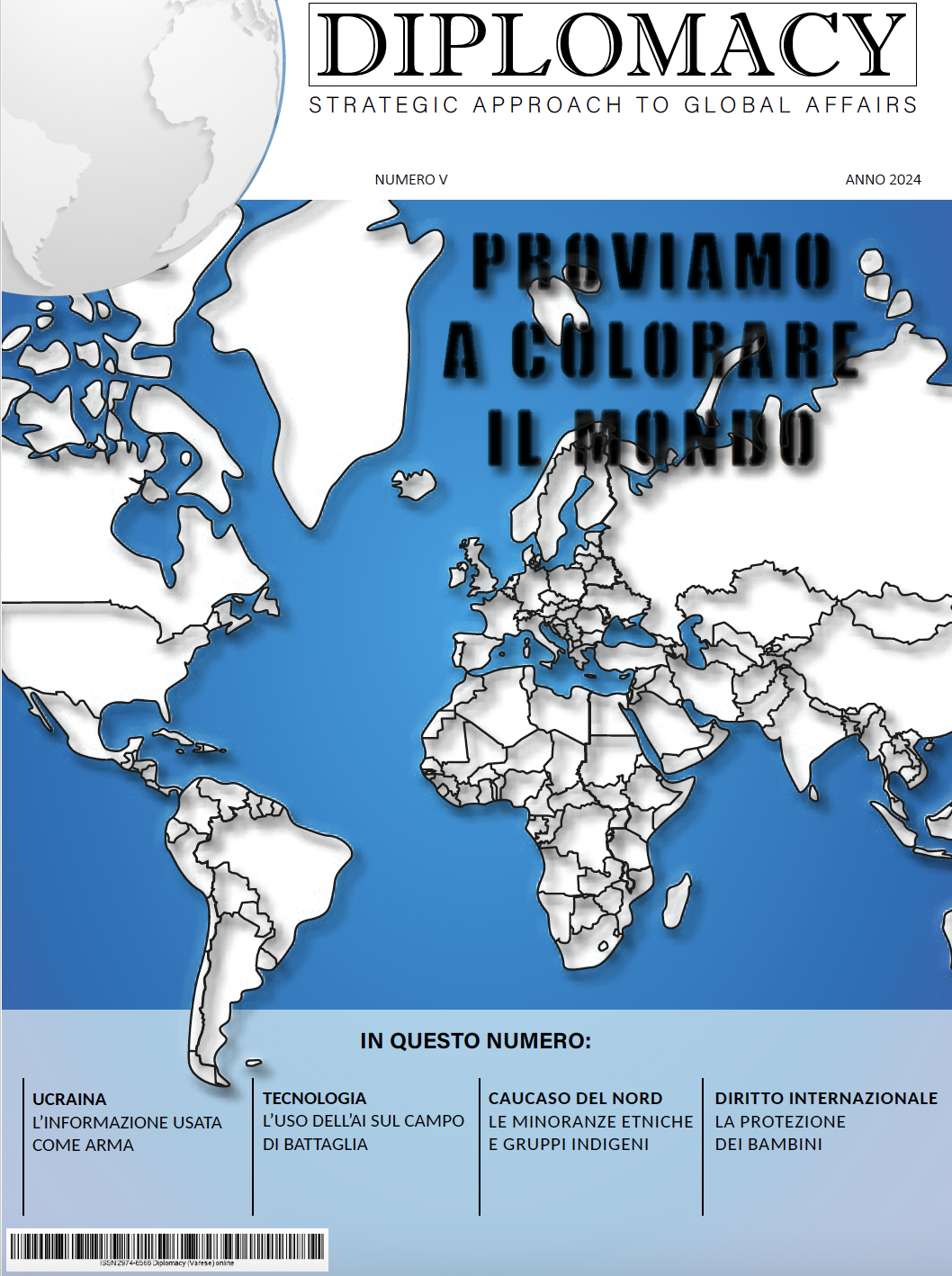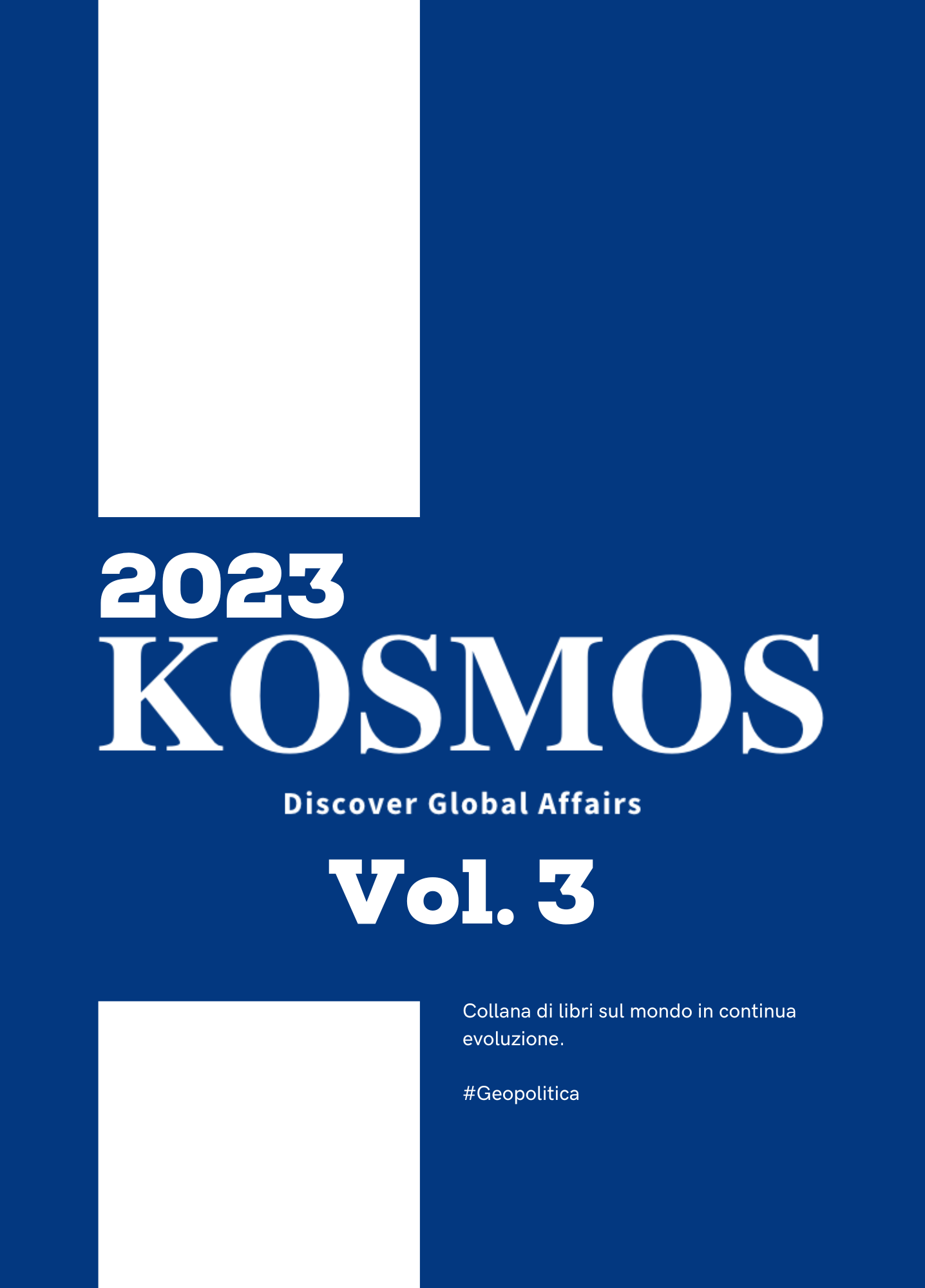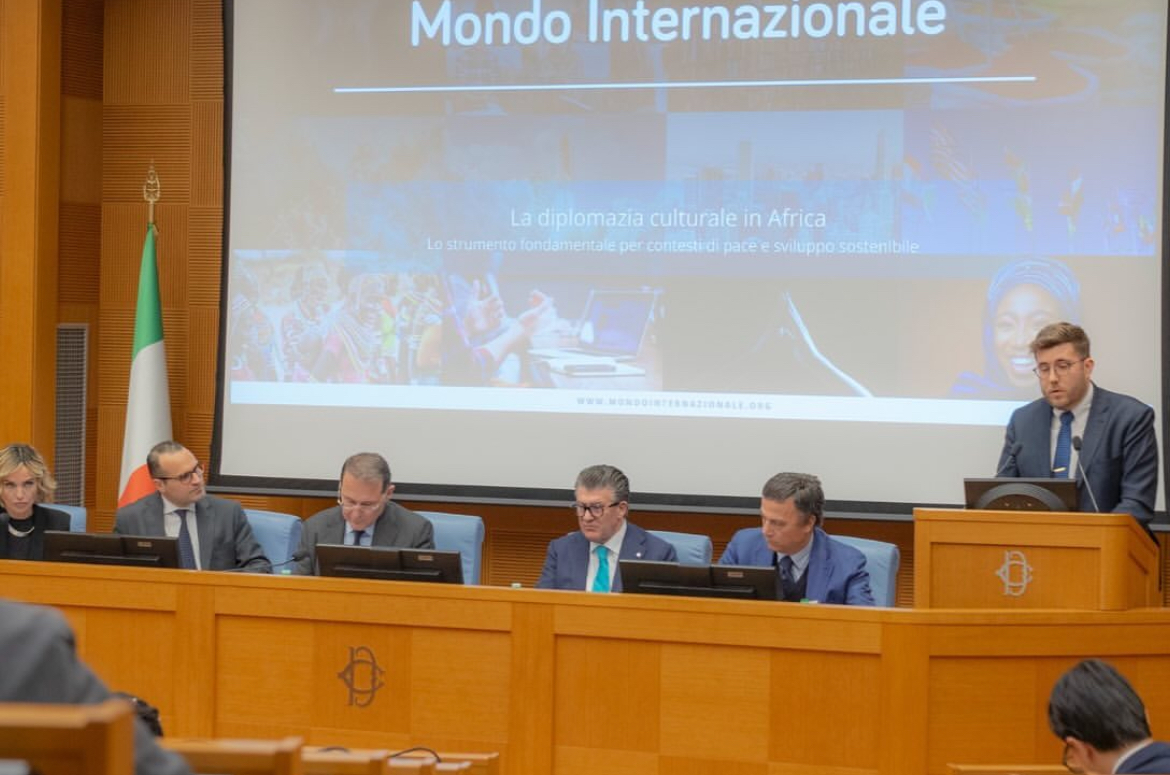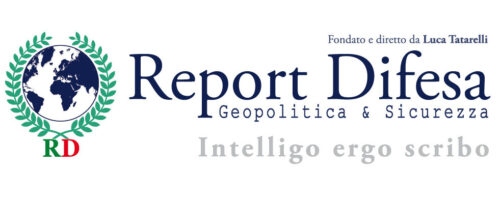18 aprile 2024
Le relazioni energetiche tra Italia e Azerbaigian: un'analisi delle dinamiche
VISUALIZZA17 aprile 2024
Le implicazioni globali della sentenza CEDU e le sfide per i diritti umani nell'era dei cambiamenti climatici.
VISUALIZZA15 aprile 2024
Lo Yemen del Nord è diventato una nuova frontiera contro l’asse costituito da Mosca e Teheran
VISUALIZZA14 aprile 2024
ROSARNO: OLTRE 188 KG DI MARIJUANA, UN FUCILE E MUNIZIONI. TRATTO IN ARRESTO DAI CARABINIERI.
VISUALIZZA14 aprile 2024
CARABINIERI PER LA CULTURA DELLA LEGALITÀ: CONTINUANO GLI INCONTRI NELLE SCUOLE NEL REGGINO
VISUALIZZACall for Papers
Diplomacy
Rivista trimestrale di "Affari Internazionali" per conoscere e scoprire i fatti accaduti nel mondo.
Kosmos
Collana di libri "KOSMOS" per approfondire la geopolitica in tutto il mondo. Dall'America del Sud all'Asia, dall'America del Nord all'Australia, passando per Europa ed Africa. Senza dimenticare i poli.
Kosmos
Collana di libri "KOSMOS" per approfondire la geopolitica in tutto il mondo. Dall'America del Sud all'Asia, dall'America del Nord all'Australia, passando per Europa ed Africa. Senza dimenticare i poli.
Growing a New Future
Diplomazia Culturale
Mondo Internazionale opera nell’ambito della diplomazia culturale, promuovendo e svolgendo attività di cooperazione internazionale a carattere interculturale, multiculturale, interdisciplinare ed intergenerazionale.
“Even if we are online, we love Human Connections”
Con un approccio digital driven Mondo Internazionale favorisce lo sviluppo di un dialogo multiculturale in tutto il mondo, a partire dai giovani, inserendoli in una realtà strutturata ed improntata all'innovazione. Le connessioni digitali ed il supporto alle Università, Istituzioni ed Aziende a livello nazionale ed internazionale sono il mezzo fondamentale per lo sviluppo di sinergie globali.
Learning by doing
Le attività promosse da Mondo Internazionale danno la possibilità a tutti gli associati, specialmente ai più giovani, di perseguire una crescita formativa e di sviluppare competenze interdisciplinari ed interculturali tramite un approccio learning by doing in un ambiente strutturato sul modello aziendale che prevede interazioni tra diverse culture e discipline in ambito internazionale.
I giovani hanno la possibilità di sviluppare le proprie competenze nelle cinque aree: le quattro divisioni - Mondo Internazionale Academy, Mondo Internazionale Post, Mondo Internazionale Hub e Mondo Internazionale Geostrategic Earth Observations - G.E.O. e l'area di Amministrazione.
Ciascun individuo è una risorsa fondamentale su cui investire per tracciare una rotta di successo verso lo sviluppo sociale a livello nazionale e globale.




































